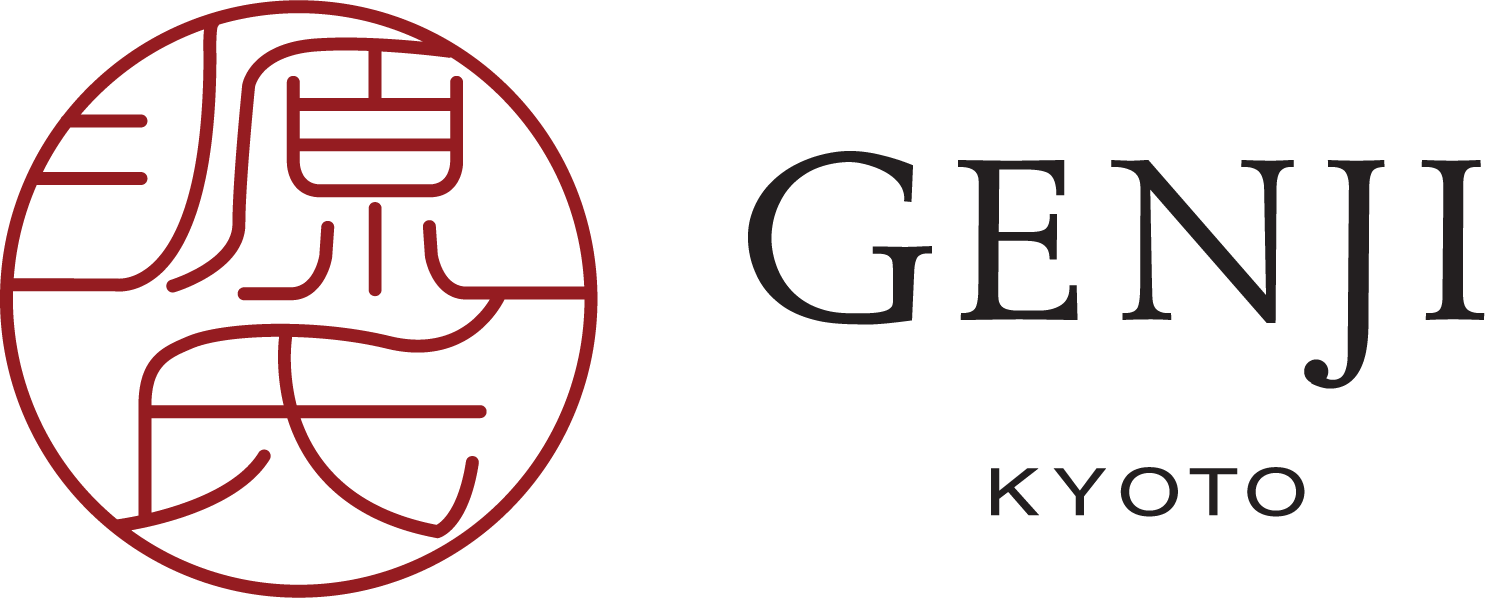Kyoto Calendar - Autumn
September
With September comes autumn, but Kyoto's summer is not over until Hassaku Matsuri, the final summer festival has taken its course. Held each year on the first Sunday of September at Matsuo Taisha shrine in Arashiyama, this is the event of the sumo matches and the lion dances.
Sumo wrestler at play on grounds of Matsuo Taisha shrine during the Hassaku Matsuri.
Even if you're not into drums and acrobatics, it is worth getting to know the Matsuo Shrine. Founded in 701, it is one of the oldest in Kyoto. It has 3 gardens in the style of different periods (as well as 3,000 roses bushes that bloom in April and May), and a history with sake brewers who still draw water from the shrine's famous well.
Matsuo Taisha has long association with sake brewers.
On Saturday night, the eve of the Hassaku festival, food and games stalls are set up, and the grounds are illuminated by a sea of lanterns (some say as many as 2,500) that light up the Kyoto sky. Enjoy the atmosphere!
September is a relaxing month to be in Kyoto, like Venice in low season. The summer heat has eased, with a little soft rain to nourish the mushrooms. Japanese bush clovers ("hagi") add pinks and purples to the autumn palette, and a plethora of seasonal fish and earthy vegetables start gracing the menus.
Hagi, or Japanese bush clover. An autumn bloom.
Sanma, or Pacific saury, an absolute Japanese favorite.
It is of course the season of the matsutake mushroom, the king of autumn flavors. They grow wild in red pine forests and are picked by masters with great skills. Prepared in many different ways, they are valued for their aroma, taste and rarity. The seasonal fish not to be missed throughout the autumn months are sanma (Pacific saury), kampachi (amberjack), salmon, and nodoguro (black throat perch), an omega-3 rich deep sea fish known as the "red jewel of the Japan Sea".
Matsutake, king of autumn flavors.
October
We are here for the foliage! Is it time? No, not yet! Foliage needs cold nights. Let's be patient!
While we wait for momiji red leaves, let's get a history lesson from the Jidai Matsuri, or Festival of the Ages. It is one of Kyoto's 3 most important festivals.
On October 22 each year, there is a procession of some 2,000 characters donning clothes and decorations from different periods in history. They start from the Meiji Restoration (recent) to Heian Period (old), spanning some 1,100 years in reverse chronological order. The parade starts at noon from the Imperial Palace and ends mid-afternoon in Heian Shrine. Paid seats are available at the Imperial Palace and also along the route.
Authentic costumes paraded during Festival of the Ages.
Heian style - straight hair down the back, white powdered face and layers of silk.
By the end of October, the leaves start turning yellow. The last of the autumn rains will have fallen. The aroma of grilled chestnuts fills the air. Barracuda, scallops, and oysters are getting fatter, as are gingko and persimmon.
Chestnut rice cooked in ceramic pot - earth and fragrant!
November
The skies are clear and turning deep blue. Camellias of all varieties start opening with aplomb.
Camellia Sasanqua
Camellia Japonica
Enjoy geisha dance performances in the Gion Kaikan hall in the first 10 days of the month. Then once you see little kids all dressed up in kimonos visiting shrines during the Shichi-go-san festival on November 15, where boys aged 3 and 5 and girls aged 3 and 7 are celebrated, you know we are finally entering peak momiji in Kyoto! The foliage colours will last until early December. Kiyomizudera, Tofuku-ji, Kodai-ji, Chion-in, Nanzen-ji, Eikando, Daigo-ji are very popular. Places like Enko-ji and Kitano Tenmangu are less well-known, but no less magnificent. Keep an eye out for which temple or shrine has light-up, and when, as the effect is absolutely magical.
Kiyomizudera with foliage ablaze in light ups is hard to beat.
Canals are very pretty in Kyoto!
Shisendo, one of the best places to contemplate the change of seasons.
Scene at Toji temple.
